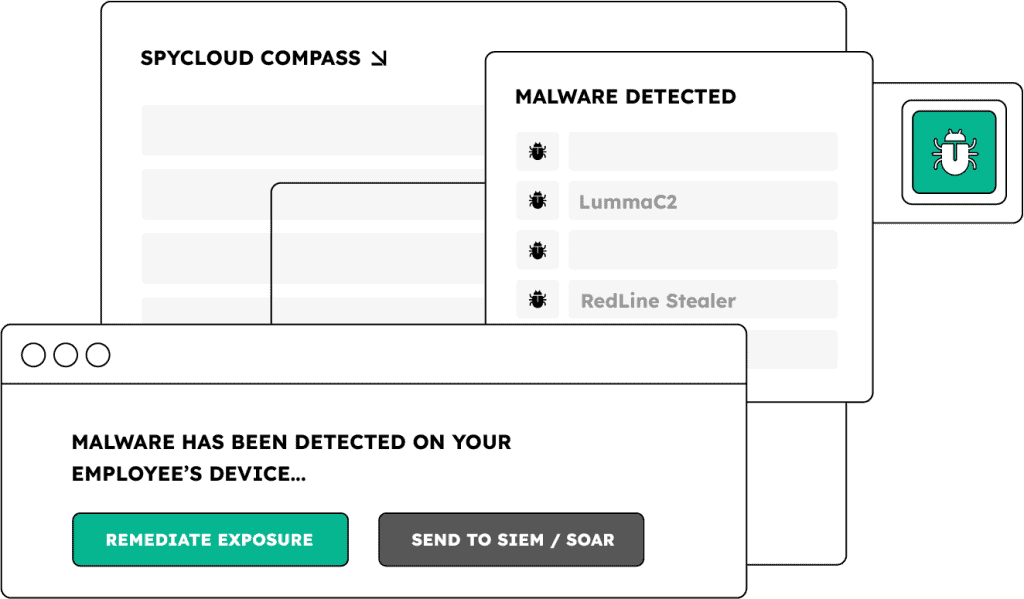PRODUCT: COMPASS MALWARE REMEDIATION
Remediate
Malware-Infected Users & Applications

Where EDRs fall short, Compass fills the gap
SpyCloud Compass solves the overlooked problem of remediating data stolen by infostealer malware – especially critical when endpoint protection tools miss two-thirds of infections. Give your SOC critical visibility into the attack surface: the exact malware-exfiltrated credentials, session tokens, and application access artifacts tied to infected users, across managed and unmanaged endpoints.
Trigger password resets, invalidate sessions, and review access using context-rich identity exposure data for post-infection remediation
Built for the stack you already run
SpyCloud Compass integrates into your EDR, SIEM, and SOAR tools – enriching the workflows your SOC already uses to detect and contain identity threats without extra lift.



EXPLORE OTHER PRODUCTS
Protect more than logins
Next steps
Don’t let malware-exfiltrated data lead to a full-blown incident. Get a demo today.